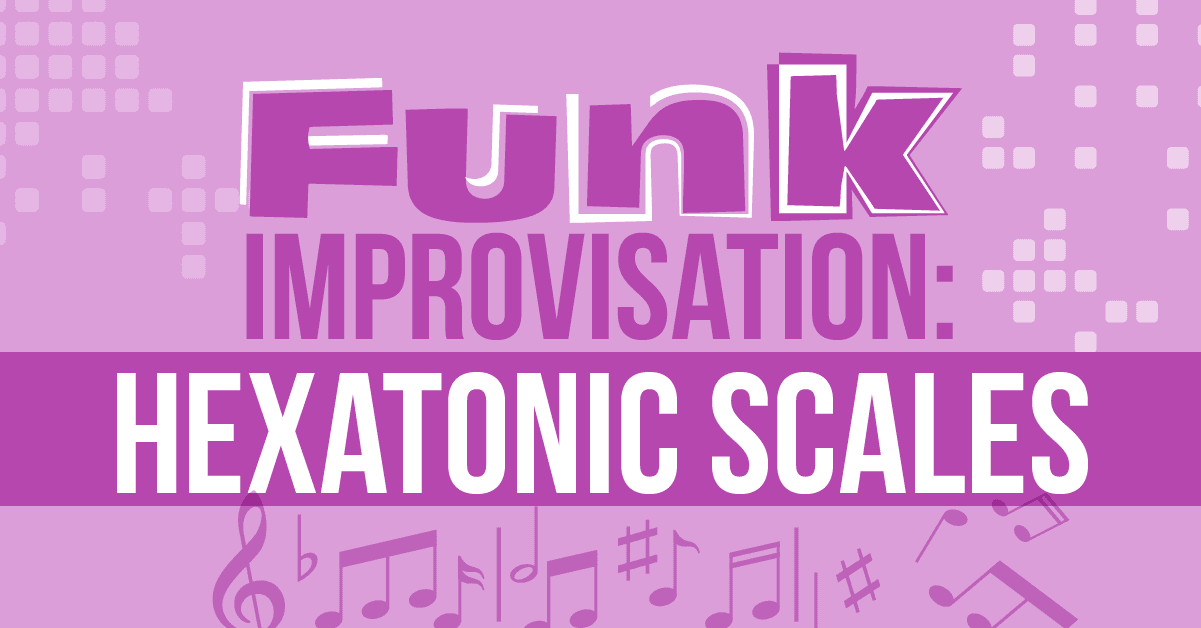Funk Improvisation: Hexatonic Scales

Using hexatonic scales can be a powerful tool when practicing improvisation. In funk music we often encounter tunes that are built on a couple chords that repeat over and over again. Sometimes we even have entire solo sections that use only one chord! What should you do if you are asked to take a solo that requires playing over only one chord? Perhaps you've tried this before and thought that you ran out of ideas too quickly. After all, how much interesting material can be created when improvising over just one chord. By using hexatonic scales we combine two chords in the place of one, helping us to create some interesting improvisational ideas over a single chord.
Hexatonic Scales: Static Chords? No Problem.
Let's get some lingo clarified first. We have all encountered tunes which use a single chord (or maybe two chords repeating over and over again). These types of tunes, such as Herbie Hancock's 'Chameleon' or The Meters' 'Cissy Strut,' are common in funk music. We call these "non-moving" chords "static chords" because they stay in one place, not resolving or moving to some other chords or harmonic areas. It's understandable that playing over only one chord might feel very limiting.
But hexatonic scales are six-note scales, thus the name "hexa-tonic" which literally means "six tones." There are a few different ways to construct hexatonic scales, but we're going to think of it as two completely separate major triads that get combined into one scale. For example, 'Cissy Strut' uses a C7 chord for the entire tune. We usually think of C7 as coming from a C mixolydian scale. But buried in that C mixolydian scale are two completely separate major triads:
We also commonly use another hexatonic scale to solo over dominant chords in a funk context. Know which one it is? The blues scale is a hexatonic scale, too.
Hexatonic Scales: How to Use Them for Soloing
Improvisation is more about understanding chord relationships than knowing a ton of scales or licks. This is why the hexatonic scale can be so helpful to our improvisation practice. It helps us think about the chord in a new way. Instead of super-imposing a mixolydian or blues scale over C7, we can now think of two separate triad pairs and playing with those relationships over the C7 chord.
Here's a great improvisation practice exercise. Practice outlining C and Bb major triads in various inversions up and down the keyboard while comping a C7 chord.
For example:
Now, we don't need to limit ourselves to notes within a C mixolydian scale in order to build hexatonic scales. For example, we could build a hexatonic scale using a C major triad and a D major triad for improvisation use over C7. The C major triad contains the chord tones C, E, and G, while the D major triad contains upper extensions (D=9th, F#=#11, A=13th). Using these triad pairs will help create a very different sound when playing over C7. Experiment with different triad pairs to create different sounds.
And for even more funk improvisation practice, check out our complete funk soloing lessons!

